
AP Environmental Science Unit 1.4: The Carbon Cycle
Vocabulary
Overview
Biogeochemical Cycles: Cycles of elements as they move through living and nonliving factors.
Reservoirs: Places where elements are stored for part of the time.
Pathways: Processes that move the elements between the reservoirs.
Biomass: Renewable energy that comes from organic matter/organisms.
Carbon Cycle
Organic Compounds: Compounds that have carbon-carbon or carbon-hydrogen bonds.
Photosynthesis: The process by which plants use sunlight, water, and carbon dioxide to create oxygen and energy in the form of sugar.
Cellular Respiration: The process of breakdown of food in cells and organisms with the release of energy.
Combustion: Occurs when any organic material is reacted (burned) in the presence of oxygen to give off the products of carbon dioxide, water, and energy.
Anaerobic Decomposition: Decomposition without the use of oxygen.
Fossil Fuel Formation: Dead organic matter builds up underground faster than it can be anaerobically decomposed, and sediment pressurizes it.
Diffusion: Molecules moving from an area of higher concentration to one of lower concentration.
Shell Formation: To build shells, marine life extracts calcium and carbonate ions from ocean water, combining them to make shells.
Deposition: The laying down of sediment carried by wind, flowing water, the sea or ice.
The Carbon Cycle
Reservoirs
Atmosphere: The layers of gases surrounding a planet or other celestial body.
Contains Carbon Dioxide (CO2) and Methane (CH4 - converts to CO2 and H2O through exposure to Ozone).
Biosphere: The part of Earth’s surface where life exists.
Contains consumers, biomass, and organic molecules (ex: Glucose [C6H12O6]).
Lithosphere: The solid, outer part of Earth, including the brittle upper portion of the mantle and the crust.
Contains fossil fuels (coal, oil, and natural gas) and Limestone (CaCO3).
Hydrosphere: All the waters on the Earth’s surface.
Contains CO2 and Carbonate (CO3^-2).
Ocean Biosphere: The part of the Ocean where life exists.
Contains organisms, biomass, organic molecules (ex: Glucose [C6H12O6]), and Calcium Carbonate.
Pathways
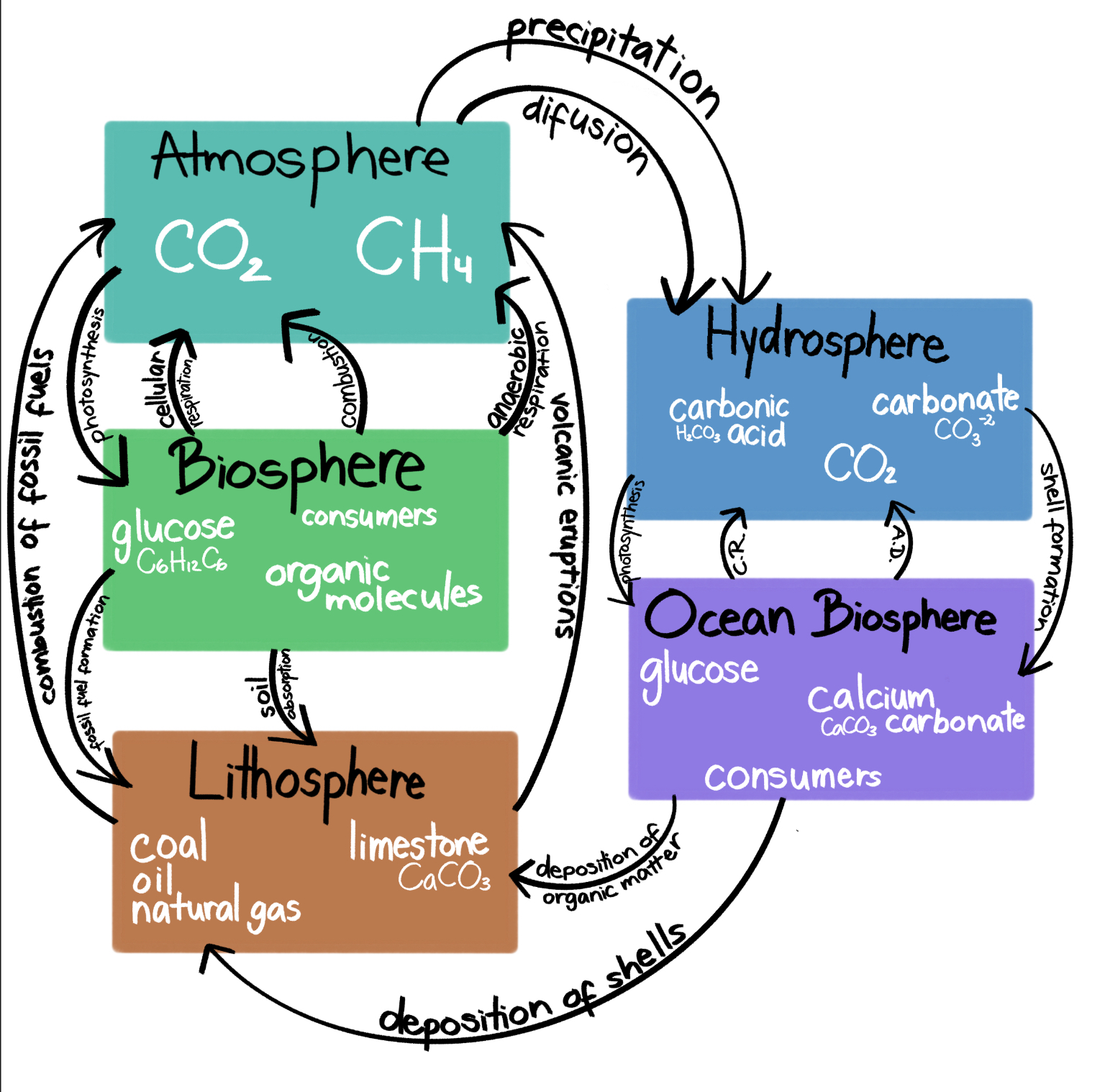
Atmosphere to Biosphere
Photosynthesis
Carbon Dioxide (CO2) → Plants
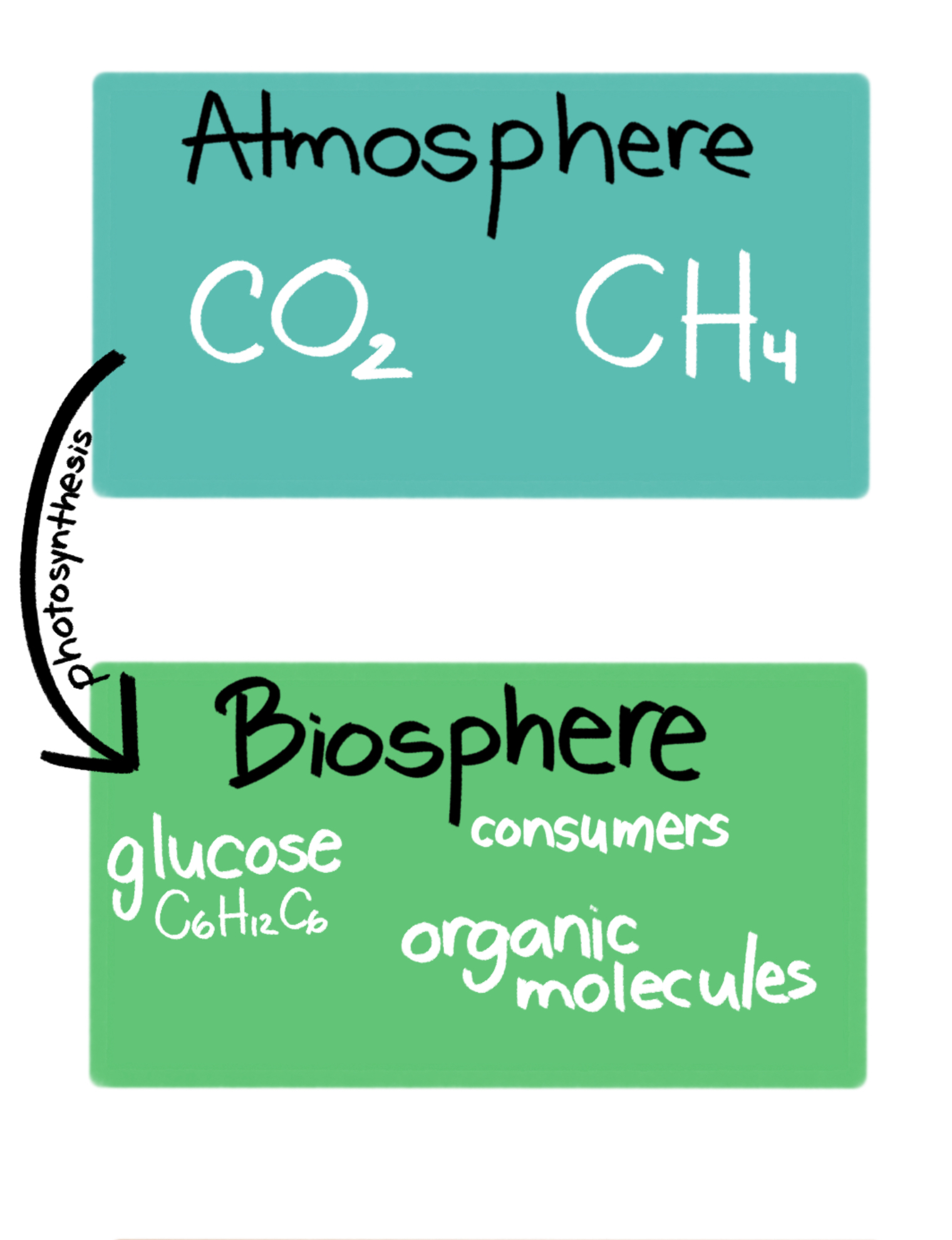
Biosphere to Atmosphere
Cellular Respiration
Consumers → Carbon Dioxide (CO2)
Combustion
Organic Material → Carbon Dioxide (CO2)
Anaerobic Decomposition
Organic Material → Methane (CH4)
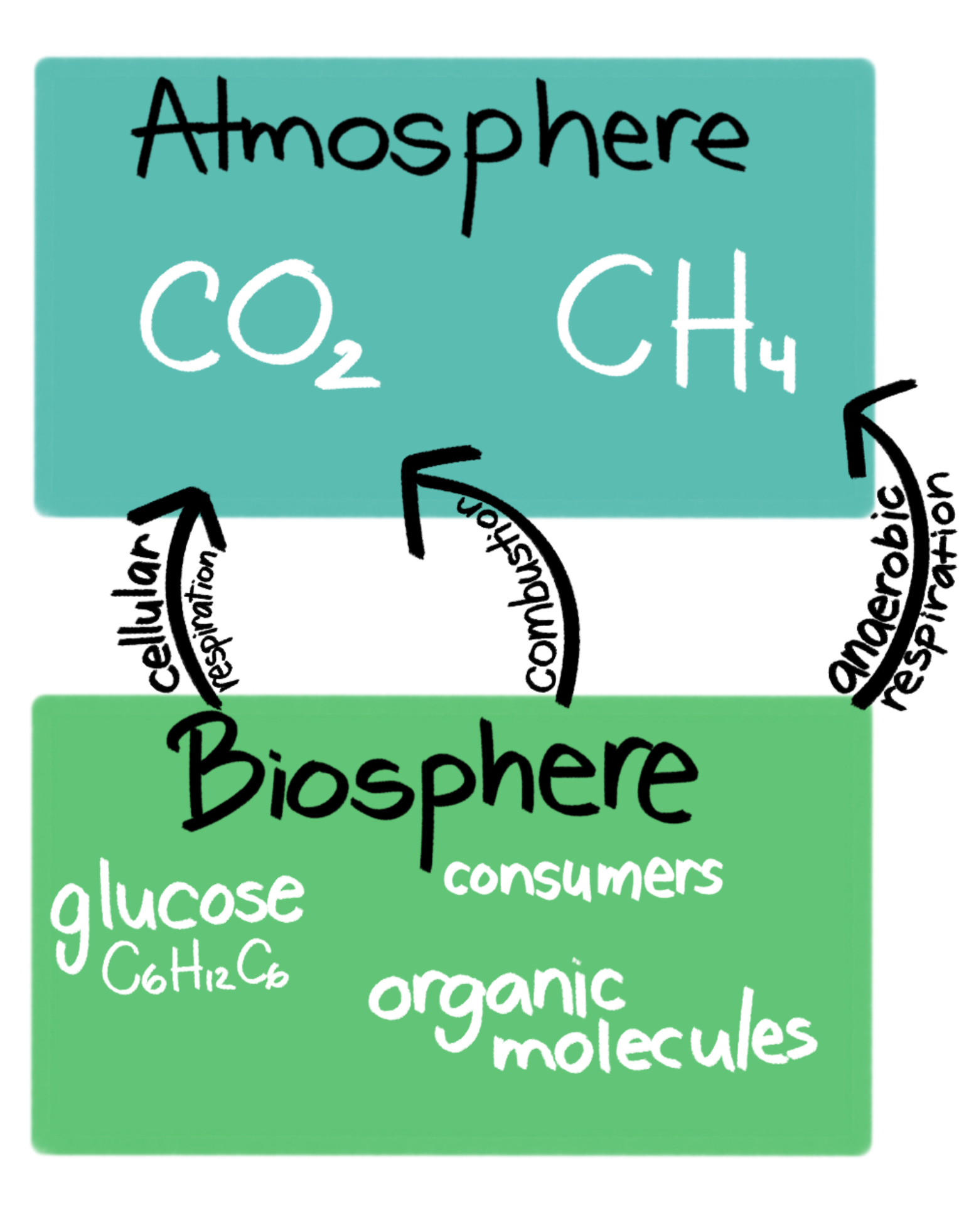
Biosphere to Lithosphere
Fossil Fuel Formation
Dead organic matter → Lithosphere
Soil Absorption
Carbon stored in dead plants’ roots → Lithosphere
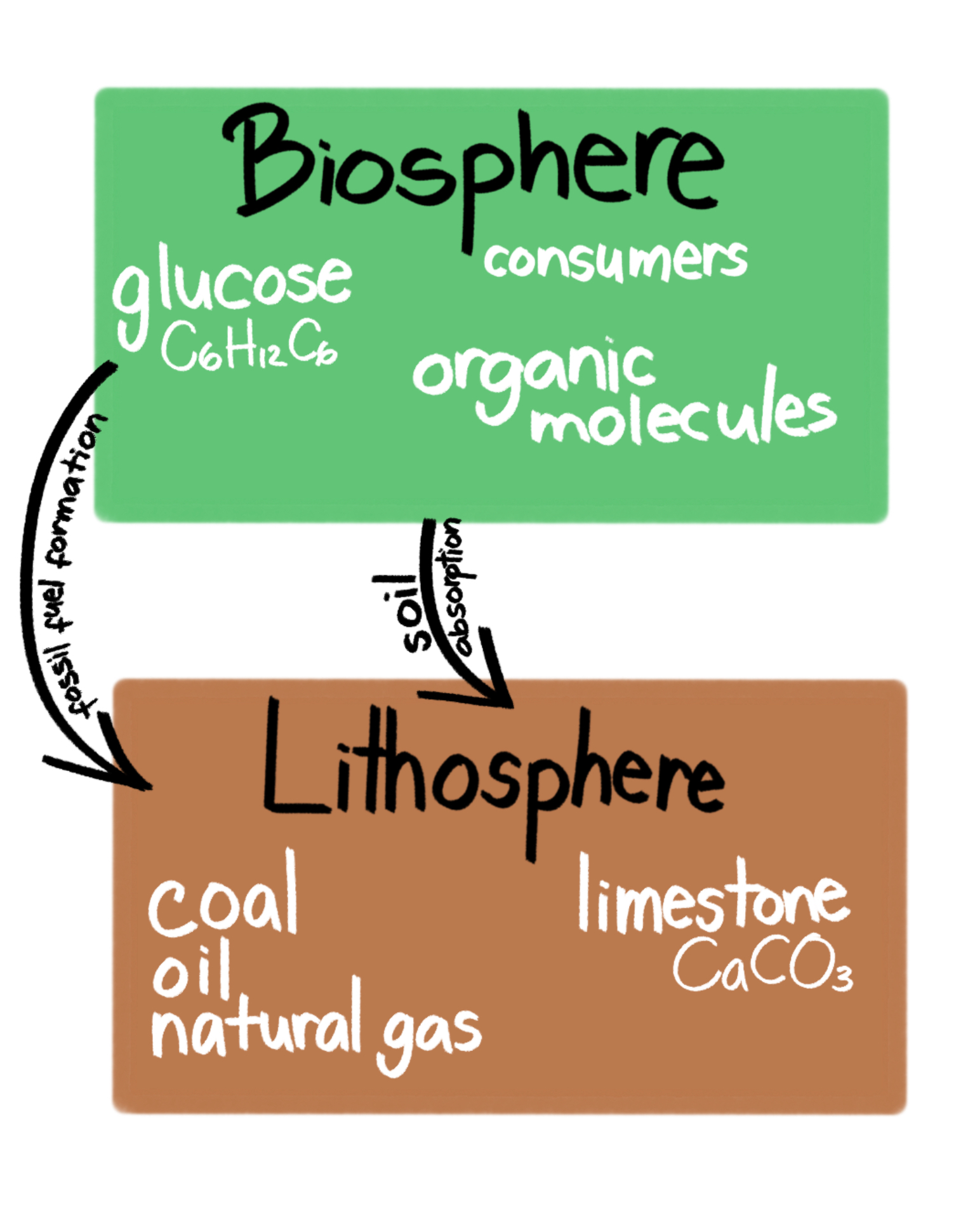
Lithosphere to Atmosphere
Combustion of Fossil Fuels
Fossil Fuels → Atmosphere
Volcanic Eruptions
Lithosphere → Atmosphere
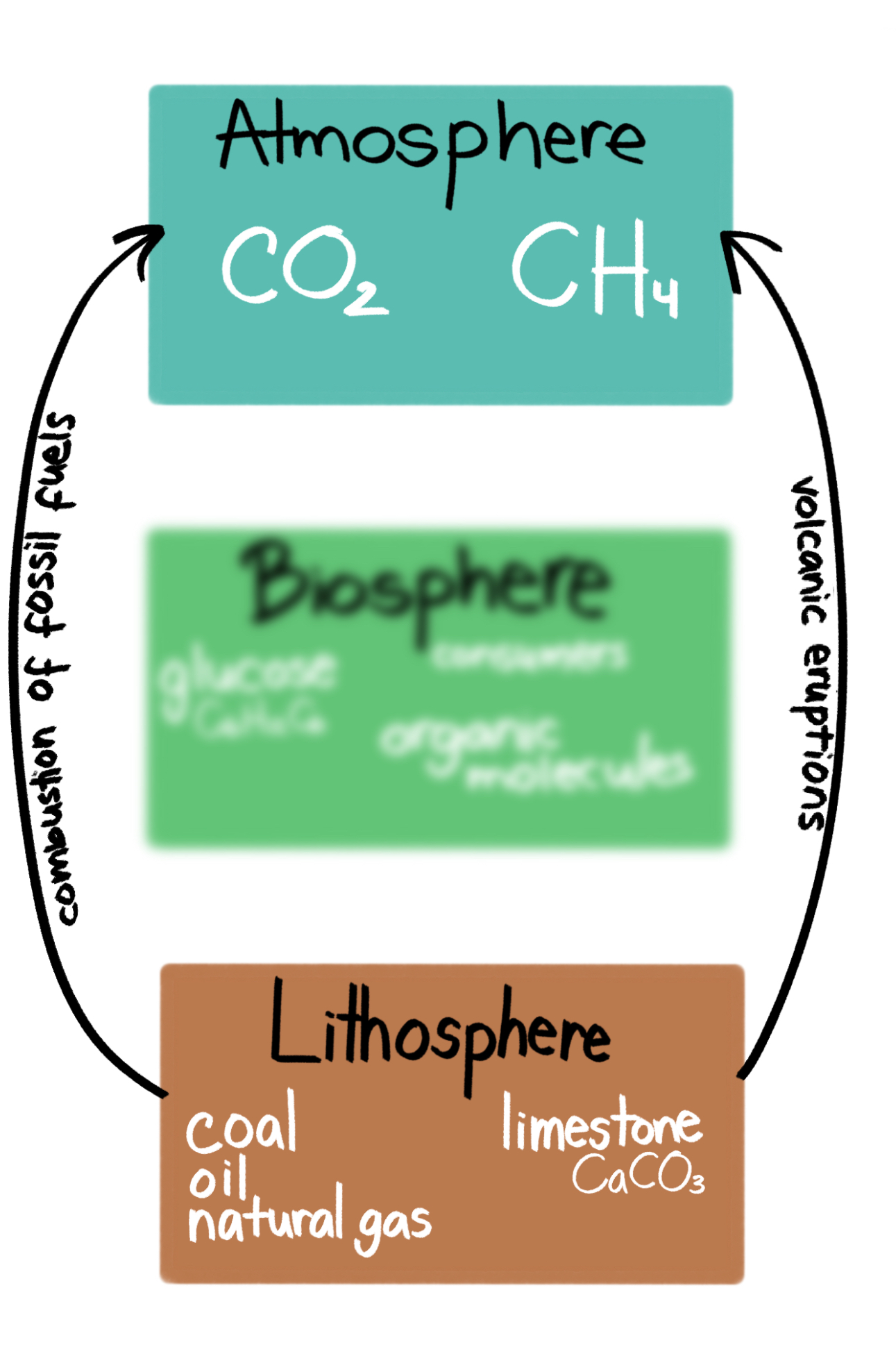
Atmosphere to Hydrosphere
Diffusion
Carbon Dioxide (CO2) → CO2
Precipitation
Carbon Dioxide (CO2) → Mixes with water (H2O) in the air → Carbonic Acid (H2CO3)
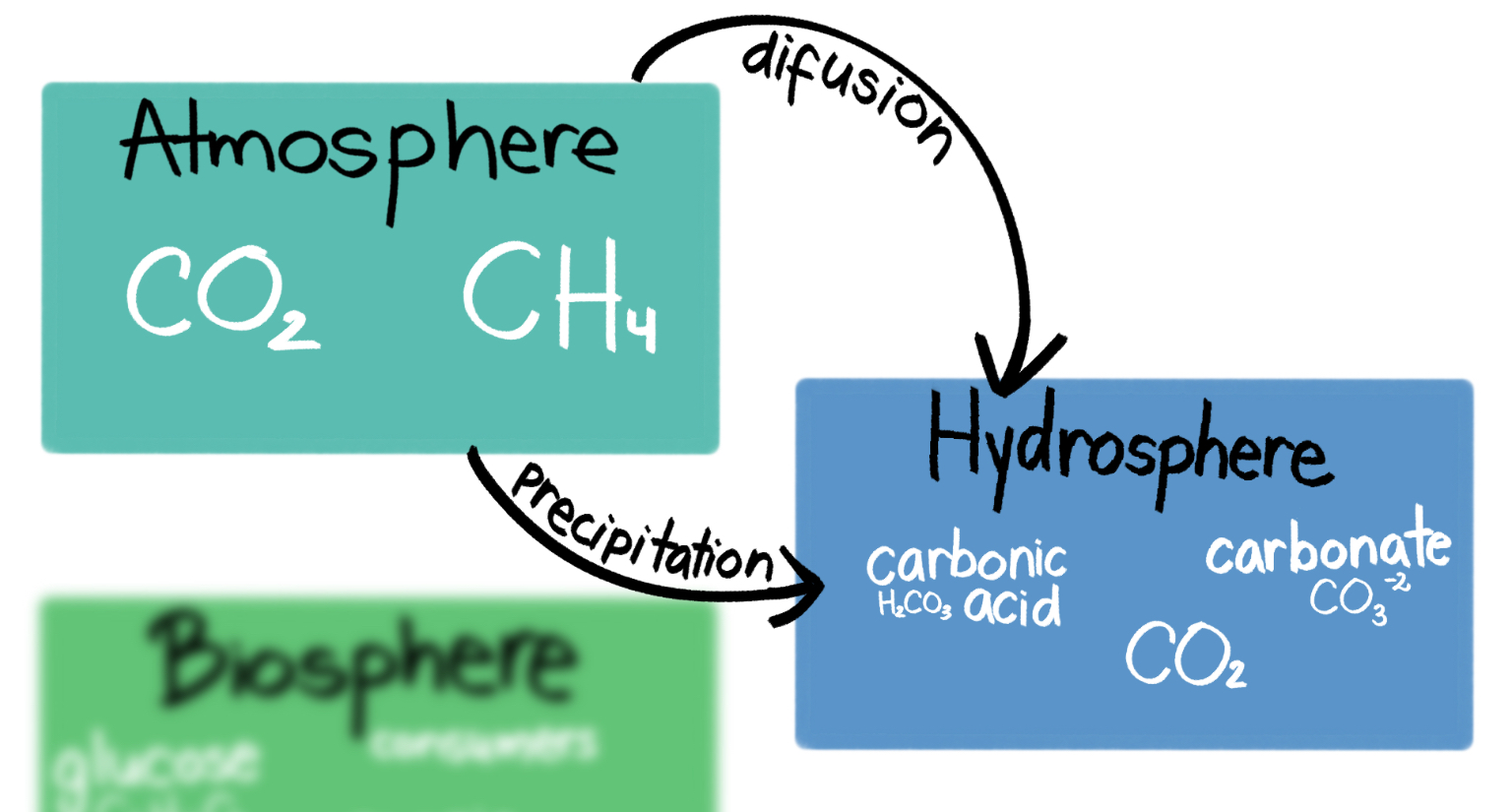
Hydrosphere to Ocean Biosphere
Photosynthesis
Carbon Dioxide (CO2)→ Plants
Shell Formation
Carbonate (CO3-2) → Mixes with Calcium (Ca+2) in the water → Calcium Carbonate (CaCO3)
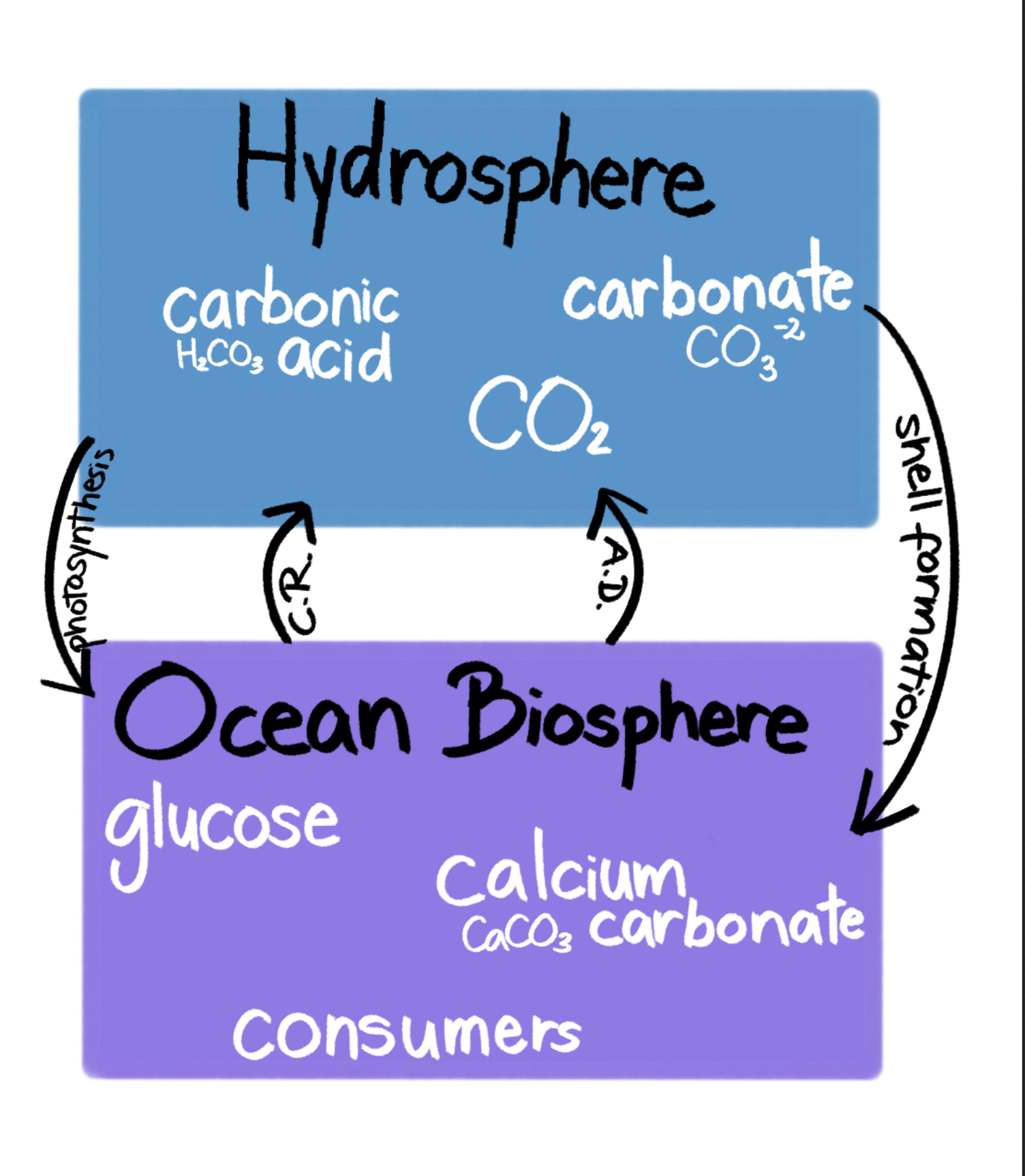
Ocean Biosphere to Lithosphere
Deposition of Organic Matter
Biomass → Fossil Fuels
Deposition of Shells
Shells (containing Calcium Carbonate) →Limestone
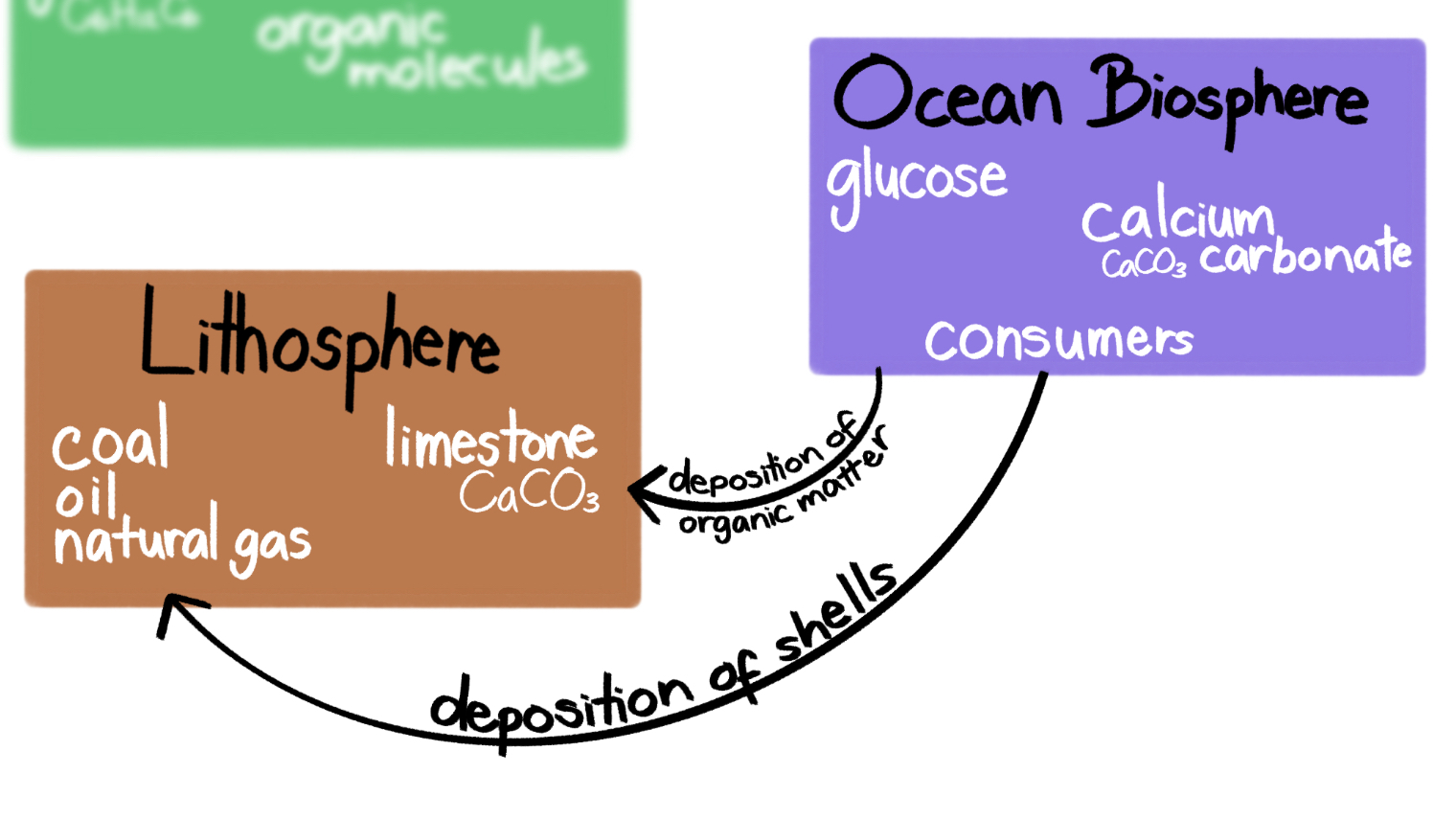
Human Disruption
Deforestation
Fewer trees/plants mean less photosynthesis and glucose.
More carbon in the air.
More carbon in the air makes more carbonic acid and more acid rain.
More carbon in the air = more heat: global warming.
Combustion of Fossil Fuels
Used to take millions of years to release fossil fuels into the Atmosphere.
Humans are burning it and quickly transferring it to the atmosphere.
Traps a lot of heat: global warming.
AP Environmental Science Unit 1.4: The Carbon Cycle
Vocabulary
Overview
Biogeochemical Cycles: Cycles of elements as they move through living and nonliving factors.
Reservoirs: Places where elements are stored for part of the time.
Pathways: Processes that move the elements between the reservoirs.
Biomass: Renewable energy that comes from organic matter/organisms.
Carbon Cycle
Organic Compounds: Compounds that have carbon-carbon or carbon-hydrogen bonds.
Photosynthesis: The process by which plants use sunlight, water, and carbon dioxide to create oxygen and energy in the form of sugar.
Cellular Respiration: The process of breakdown of food in cells and organisms with the release of energy.
Combustion: Occurs when any organic material is reacted (burned) in the presence of oxygen to give off the products of carbon dioxide, water, and energy.
Anaerobic Decomposition: Decomposition without the use of oxygen.
Fossil Fuel Formation: Dead organic matter builds up underground faster than it can be anaerobically decomposed, and sediment pressurizes it.
Diffusion: Molecules moving from an area of higher concentration to one of lower concentration.
Shell Formation: To build shells, marine life extracts calcium and carbonate ions from ocean water, combining them to make shells.
Deposition: The laying down of sediment carried by wind, flowing water, the sea or ice.
The Carbon Cycle
Reservoirs
Atmosphere: The layers of gases surrounding a planet or other celestial body.
Contains Carbon Dioxide (CO2) and Methane (CH4 - converts to CO2 and H2O through exposure to Ozone).
Biosphere: The part of Earth’s surface where life exists.
Contains consumers, biomass, and organic molecules (ex: Glucose [C6H12O6]).
Lithosphere: The solid, outer part of Earth, including the brittle upper portion of the mantle and the crust.
Contains fossil fuels (coal, oil, and natural gas) and Limestone (CaCO3).
Hydrosphere: All the waters on the Earth’s surface.
Contains CO2 and Carbonate (CO3^-2).
Ocean Biosphere: The part of the Ocean where life exists.
Contains organisms, biomass, organic molecules (ex: Glucose [C6H12O6]), and Calcium Carbonate.
Pathways

Atmosphere to Biosphere
Photosynthesis
Carbon Dioxide (CO2) → Plants

Biosphere to Atmosphere
Cellular Respiration
Consumers → Carbon Dioxide (CO2)
Combustion
Organic Material → Carbon Dioxide (CO2)
Anaerobic Decomposition
Organic Material → Methane (CH4)

Biosphere to Lithosphere
Fossil Fuel Formation
Dead organic matter → Lithosphere
Soil Absorption
Carbon stored in dead plants’ roots → Lithosphere

Lithosphere to Atmosphere
Combustion of Fossil Fuels
Fossil Fuels → Atmosphere
Volcanic Eruptions
Lithosphere → Atmosphere

Atmosphere to Hydrosphere
Diffusion
Carbon Dioxide (CO2) → CO2
Precipitation
Carbon Dioxide (CO2) → Mixes with water (H2O) in the air → Carbonic Acid (H2CO3)

Hydrosphere to Ocean Biosphere
Photosynthesis
Carbon Dioxide (CO2)→ Plants
Shell Formation
Carbonate (CO3-2) → Mixes with Calcium (Ca+2) in the water → Calcium Carbonate (CaCO3)

Ocean Biosphere to Lithosphere
Deposition of Organic Matter
Biomass → Fossil Fuels
Deposition of Shells
Shells (containing Calcium Carbonate) →Limestone

Human Disruption
Deforestation
Fewer trees/plants mean less photosynthesis and glucose.
More carbon in the air.
More carbon in the air makes more carbonic acid and more acid rain.
More carbon in the air = more heat: global warming.
Combustion of Fossil Fuels
Used to take millions of years to release fossil fuels into the Atmosphere.
Humans are burning it and quickly transferring it to the atmosphere.
Traps a lot of heat: global warming.
 Knowt
Knowt
